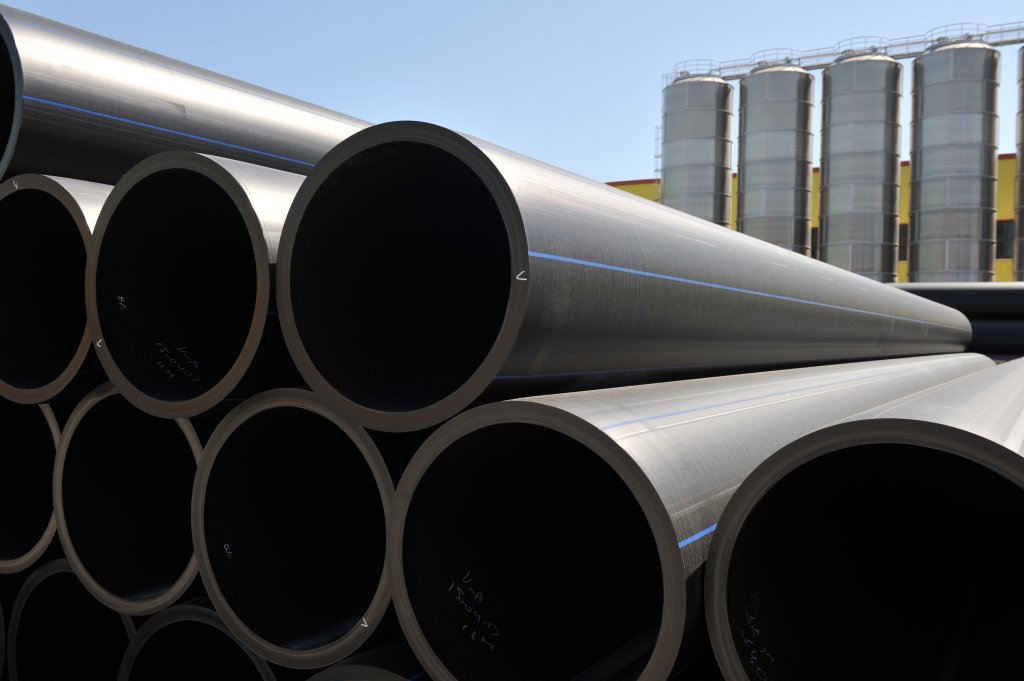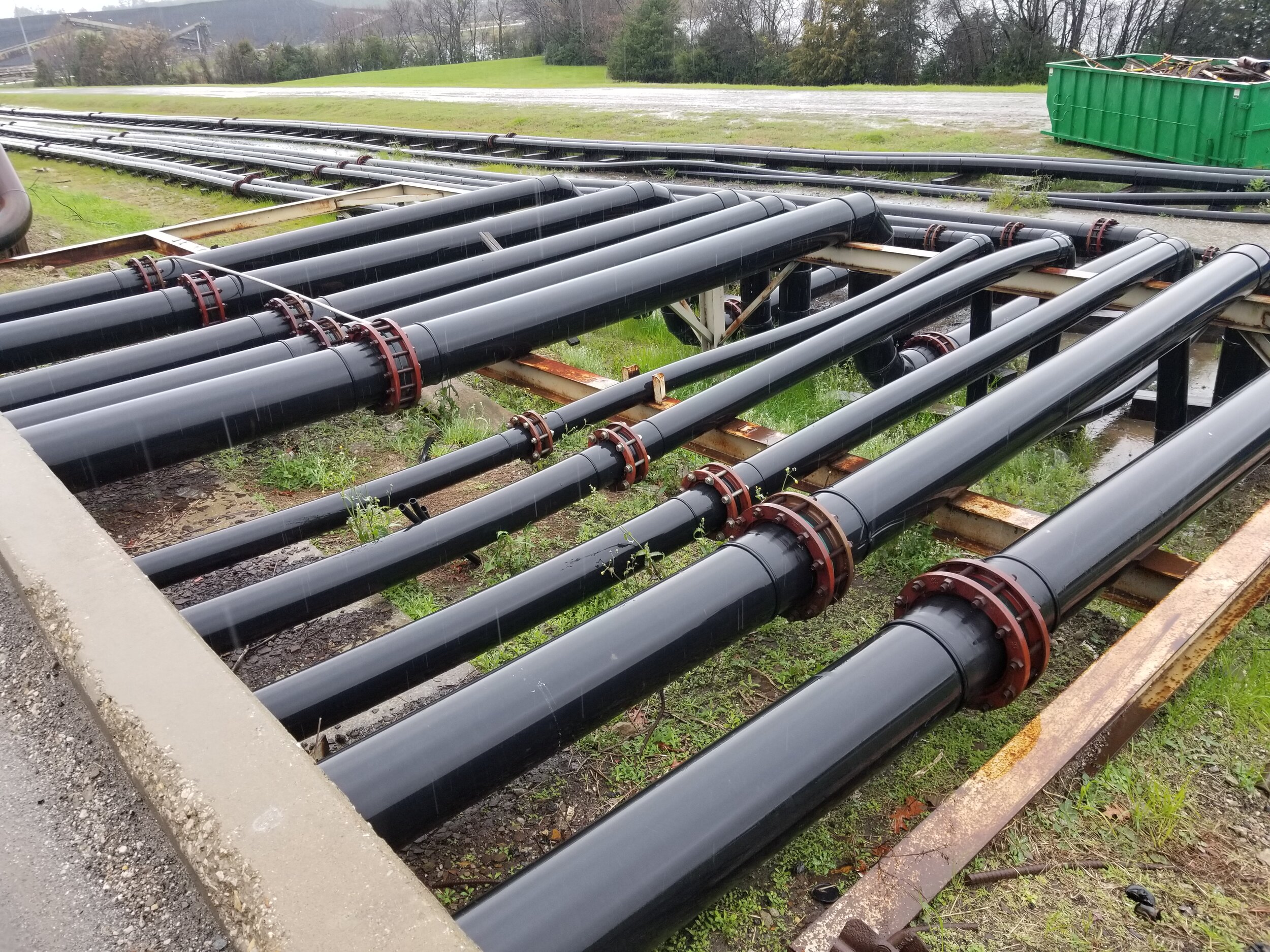Why Pipe Supplier American Plastics Midland Is the Trusted Partner for Contractors
The Essential Actions for Effective Installation of HDPE Pipe in Your Next Job
Successful installation of HDPE pipeline needs careful planning and execution. Secret actions consist of examining job demands, preparing the website, and selecting appropriate joining techniques. Each stage plays an essential function in guaranteeing the honesty and efficiency of the pipeline. Comprehending these important steps can greatly influence the total success of the task - American Plastics HDPE Pipe for Oilfield. The nuances of each action might hold the secret to getting over common obstacles encountered throughout setup.
Comprehending the Advantages of HDPE Pipeline
High-density polyethylene (HDPE) pipe provides various advantages that make it a preferred choice for various applications. Its high resistance to deterioration and chemicals assurances durability popular settings, greatly expanding the life expectancy of installations. Additionally, HDPE's flexibility allows for easier installment, specifically in tough surfaces, as it can bend without breaking. The light-weight nature of HDPE pipeline streamlines transport and handling, lowering labor prices during installment.
Additionally, HDPE pipeline is known for its low friction coefficient, which enhances liquid flow and lessens energy usage. Its smooth building and construction reduces the danger of leaks, contributing to much better source administration and environmental security. Additionally, HDPE is recyclable, lining up with lasting techniques and lowering environmental impact. On the whole, the combination of toughness, adaptability, and eco-friendliness makes HDPE pipe an exceptional option for a variety of projects, from water circulation to commercial applications.
Preparation Your HDPE Pipeline Setup
When planning an installment of HDPE pipeline, cautious factor to consider of several crucial aspects is vital to secure a successful project. Task managers need to examine the particular demands of the pipeline, including the planned usage, flow prices, and environmental problems. Comprehending these criteria will certainly direct the selection of proper pipe dimensions and product quality.
Next, timelines should be developed, factoring in procurement timetables and any type of prospective hold-ups. Control with regional authorities for permits and regulatory conformity is additionally crucial. Additionally, a detailed budget needs to be prepared, including all prices related to products, labor, and equipment.
Finally, it is essential to engage a certified group experienced in HDPE pipe installation. Their proficiency will certainly help mitigate dangers, assurance adherence to market criteria, and eventually add to the job's success. Complete planning lays the foundation for a smooth installment procedure and resilient performance of the HDPE piping system.
Preparing the Website for Setup
Appropriate site prep work is vital for the successful setup of HDPE pipe. Before installation begins, the site needs to be extensively examined to guarantee it meets all essential needs. This consists of checking the ground for existing frameworks, energies, and possible dangers that can impede the installment procedure.

Proper altitude and placement should be developed to preserve a consistent slope for drain objectives. Appropriate drain around the setup site is also essential to stop water accumulation, which can result in issues down the line.
Techniques for Signing Up With HDPE Pipings
Achieving a reliable link between HDPE pipelines is essential for making sure the stability and durability of the installation. Different strategies exist for joining these pipelines, each fit for various task needs. Combination welding is one of the most common techniques, using warmth to bond the pipeline finishes together, developing a seamless and durable connection. This strategy can be further categorized into socket fusion and butt combination, relying on the pipeline configurations.
Mechanical installations are one more alternative, using clamps and threaded adapters to join sections of HDPE pipeline. While generally faster to set up, they may require extra maintenance in time. Electrofusion is a customized method that entails using electrical present to warm and fuse the pipelines via specifically designed fittings, making certain a solid bond. Choosing the appropriate signing up with technique is critical, as it directly affects the general efficiency and reliability of the HDPE piping system in the intended application.
Checking and Assessment of Installed Pipes
The testing and evaluation of installed HDPE pipelines are essential to ensuring their functionality and longevity. This process incorporates aesthetic inspection techniques, pressure screening approaches, and leakage detection procedures to identify possible concerns. By utilizing these approaches, specialists can validate the honesty of the setup prior to it is placed right into use.
Aesthetic Inspection Techniques
Utilizing efficient visual evaluation techniques is crucial for ensuring the stability of set up HDPE pipelines. Inspectors need to systematically take a look at all noticeable sections of the pipeline to determine any kind of indications of damages, misalignment, or incorrect installation. Secret indicators to examine consist of joint honesty, surface area abnormalities, and connections. Inspectors might use devices such as amplifying glasses or electronic cameras to enhance visibility and detail. It is vital to look for indications of environmental stress, such as bending or extreme flexing, which can compromise performance. Constant paperwork of searchings for allows for tracking changes with time and assists overview needed repair services. By sticking to well established visual examination protocols, task teams can notably lower the threat of future failings and guarantee lasting reliability of the piping system.
Pressure Evaluating Techniques
Visual assessment offers as an initial procedure, yet it is not adequate by itself to ensure the efficiency of installed HDPE pipes. Pressure screening techniques are necessary for making sure the stability of these systems. Usually, hydrostatic testing is utilized, where the pipes are filled with water and subjected to stress degrees above the designated operating pressure. This technique helps identify weak points or potential leaks. Pneumatic testing can additionally be used, although it brings higher dangers because of the compressibility of air. Despite the approach picked, sticking to industry requirements and safety procedures is vital. After conducting pressure tests, detailed documentation is needed to validate the outcomes and verify that the installment satisfies all functional demands before continuing to the following stage of the job.

Leak Discovery Procedures
Just how can one guarantee that set up HDPE pipes are cost-free from leakages? Reliable leakage detection treatments are important to protect the honesty of the system. At first, aesthetic examinations need to be done, searching for indicators of water build-up or soil erosion around pipeline joints. Following this, stress screening can verify the system's stamina. A common technique is the hydrostatic examination, where shower arm connector water is presented under stress, keeping an eye on for drops that suggest potential leakages. Additionally, advanced modern technologies, such as acoustic sensing units or infrared thermography, can identify leaks that might not show up. Routine tracking and maintenance more contribute to the longevity of HDPE pipelines, guaranteeing they stay leak-free throughout their operational life-span. Correct documentation of these treatments is essential for compliance and future referral.
Maintenance Tips for Long-Term Efficiency
To assure the long life of HDPE pipelines, establishing a regular assessment schedule is necessary. This aggressive strategy enables the very early detection of potential concerns, reducing expensive fixings. Furthermore, carrying out appropriate cleaning strategies will aid preserve peak performance and stop accumulation that can influence performance.
Routine Inspection Set Up
HDPE pipelines are understood for their toughness and resistance to corrosion, developing a routine evaluation schedule is important for ensuring their lasting efficiency. Routine examinations help recognize possible concerns such as leakages, joint stability, and environmental effects that may affect the pipe's capability. It is recommended that inspections occur a minimum of biannually, or extra regularly in environments with extreme problems. hdpe pipe fittings Midland TX. Throughout these evaluations, aesthetic checks need to be performed to detect indications of wear or damages. In addition, utilizing technology such as ultrasonic testing can offer further understandings into the pipeline's problem. By applying a structured assessment routine, task managers can proactively attend to troubles, therefore prolonging the lifespan of HDPE pipes and maintaining system effectiveness
Appropriate Cleansing Techniques
Appropriate cleaning methods play an important role in keeping the long-lasting performance of HDPE pipelines. Routine cleaning protects against the build-up of particles, sediment, and biofilm, which can result in obstructions and lowered circulation performance. Operators should employ techniques such as high-pressure water jetting or foam cleaning to efficiently eliminate pollutants without damaging the pipe surface area. It is essential to stay clear of using harsh chemicals that might weaken HDPE product. Furthermore, scheduled maintenance checks ought to consist of visual assessments for any signs of wear or damages. Effectively educated workers must lug out these cleansing processes, making certain compliance with safety and security and ecological policies. By implementing these practices, the lifespan of HDPE pipelines can be significantly extended, guaranteeing optimal performance throughout their operational life.
Frequently Asked Inquiries
What Are the Ecological Influences of HDPE Pipeline Manufacturing?
The environmental influences of HDPE pipe manufacturing include greenhouse gas exhausts, energy usage during manufacturing, potential plastic pollution, and difficulties in recycling. Nevertheless, HDPE's long life and resistance to corrosion can alleviate some ecological problems.
How Does HDPE Pipe Compare to Various Other Materials?

What Devices Are Necessary for HDPE Pipeline Installment?
Essential devices for HDPE pipeline installment consist of a fusion device, original site pipeline cutters, shovels, gauging tape, and safety gear. Proper equipment warranties efficient, safe handling and setup, adding to the project's overall success and integrity.
Are There Any Kind Of Particular Laws for HDPE Pipe Installment?
Specific policies for HDPE pipe setup vary by region, often governed by neighborhood, state, or government codes. Conformity with these laws guarantees safety, environmental protection, and functionality, making adherence vital for successful task outcomes.
Can HDPE Pipeline Be Recycled After Usage?
Yes, HDPE pipelines can be recycled after use. Their polycarbonate nature enables reprocessing, making them appropriate for recycling right into new items. This sustainability aspect adds to ecological preservation and promotes circular economic climate techniques in building and construction.